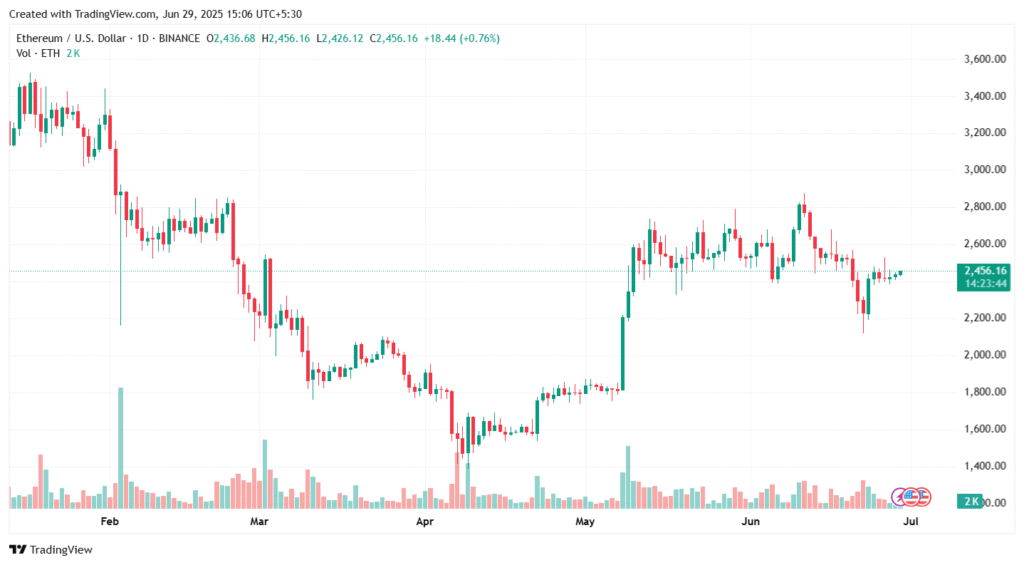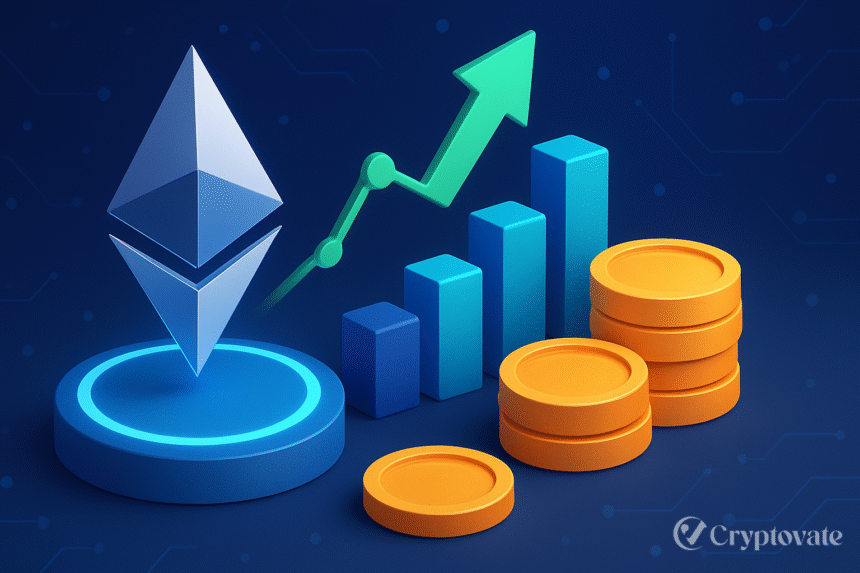– Ad –
| Getting your Trinity Audio player ready... |
Ethereum, the second-largest cryptocurrency by market capitalization, has been a cornerstone of the blockchain world since its inception in 2015. As we navigate 2025, investors are asking: Is Ethereum still a smart investment choice? With its robust technology, growing adoption, and evolving ecosystem, Ethereum remains a compelling option, but it’s not without risks. This article dives into Ethereum’s investment potential, key factors driving its value, and what you need to consider before investing.
Why Ethereum Stands Out in 2025
Ethereum’s appeal lies in its role as a decentralized platform powering smart contracts and decentralized applications (dApps). Unlike Bitcoin, which primarily serves as a store of value, Ethereum is a programmable blockchain, enabling innovations like decentralized finance (DeFi), non-fungible tokens (NFTs), and Web3 applications. Here’s why Ethereum continues to shine:
1. Technological Advancements
Ethereum’s transition to proof-of-stake (PoS) via the 2022 Merge reduced its energy consumption by over 99%, making it more sustainable and appealing to environmentally conscious investors. In 2025, ongoing upgrades like sharding aim to boost scalability, allowing Ethereum to process thousands of transactions per second. Layer-2 solutions, such as Optimism and Arbitrum, further reduce transaction costs and enhance speed, keeping Ethereum competitive.
2. Dominance in DeFi and NFTs
Ethereum hosts over 60% of DeFi protocols, with platforms like Uniswap and Aave driving significant network activity. The NFT market, despite fluctuations, continues to thrive on Ethereum, with marketplaces like OpenSea generating substantial transaction volume. This ecosystem dominance ensures consistent demand for ETH, as users need it to pay gas fees for transactions.
3. Institutional Adoption
Institutional interest in Ethereum has surged. Ethereum-based exchange-traded funds (ETFs) have gained traction, providing traditional investors exposure to ETH without directly holding it. Major financial players are also staking ETH, attracted by annual yields of 3-5%. This institutional backing signals long-term confidence in Ethereum’s value proposition.
4. Developer Activity
Ethereum boasts one of the largest developer communities in the blockchain space. Thousands of developers are building dApps, protocols, and tools, ensuring Ethereum remains at the forefront of innovation. This vibrant ecosystem makes Ethereum a hub for blockchain experimentation, from gaming to supply chain solutions.
Also Read: Ethereum’s Comeback King? Why Arthur Hayes Bets on $5,000 ETH in 2025
Risks to Consider
While Ethereum’s strengths are undeniable, investing in it comes with risks. Understanding these challenges is crucial for making an informed decision.
1. Competition from Layer-1 Blockchains
Newer blockchains like Solana, Cardano, and Aptos offer faster transactions and lower fees, posing a threat to Ethereum’s market share. These competitors are attracting developers and users, particularly for applications requiring high throughput. Ethereum must continue innovating to maintain its edge.
2. Market Volatility
Cryptocurrencies are inherently volatile. Ethereum’s price, which has fluctuated between $2,500 and $4,000 in recent years, is sensitive to macroeconomic factors like interest rates, inflation, and global economic conditions. A potential recession in 2025 could depress crypto prices, including ETH.
3. Regulatory Uncertainty
Regulatory scrutiny remains a concern. Governments worldwide are tightening rules on cryptocurrencies, with the U.S. leading efforts to classify certain tokens as securities. Unfavorable regulations could limit Ethereum’s growth or accessibility in key markets.
4. High Gas Fees
Despite layer-2 advancements, Ethereum’s mainnet gas fees can spike during network congestion. High costs may deter smaller users or push them toward cheaper alternatives, impacting Ethereum’s user base.
Ethereum’s Price Outlook in 2025
Predicting cryptocurrency prices is challenging, but Ethereum’s fundamentals suggest potential for growth. Analysts estimate ETH could reach $5,000-$7,000 by the end of 2025, driven by increased adoption, technological upgrades, and macroeconomic recovery. However, a bearish market could see prices drop below $2,500. Investors should monitor market trends and technical indicators, such as moving averages and relative strength index (RSI), to gauge short-term movements.

How to Approach Investing in Ethereum
If you’re considering Ethereum as an investment in 2025, here are practical steps to maximize your success:
- Assess Risk Tolerance: Ethereum is a high-risk, high-reward asset. Make sure it matches your financial objectives and risk tolerance.
- Use Dollar-Cost Averaging (DCA): Instead of investing a lump sum, spread your investment over time to mitigate volatility.
- Diversify Your Portfolio: Balance ETH with other assets like Bitcoin, stablecoins, or traditional investments to reduce risk.
- Explore Staking: Staking ETH on platforms like Lido or directly through validators offers passive income, with yields typically ranging from 3-5%.
- Stay Informed: Follow industry news, developer updates, and market sentiment to make data-driven decisions.
Conclusion
Ethereum remains a compelling investment choice in 2025, thanks to its technological advancements, ecosystem dominance, and institutional support. However, competition, volatility, and regulatory risks require careful consideration. By diversifying, using strategies like DCA, and staying informed, investors can navigate Ethereum’s potential while managing risks. Whether you’re a seasoned crypto enthusiast or a newcomer, Ethereum’s role in shaping the future of blockchain makes it worth evaluating for your portfolio.
FAQs
Is Ethereum a better investment than Bitcoin in 2025?
Ethereum and Bitcoin serve different purposes. Bitcoin mainly serves as a store of value, whereas Ethereum enables dApps and smart contracts. Ethereum may offer higher growth potential due to its ecosystem, but Bitcoin is often seen as a safer, more stable crypto asset.
How can I invest in Ethereum safely?
Use reputable exchanges like Coinbase, Binance, or Kraken to buy ETH. Store your assets in a secure wallet, such as a hardware wallet (e.g., Ledger) or a trusted software wallet. Avoid sharing private keys and enable two-factor authentication.
What are the benefits of staking Ethereum?
Staking ETH lets you earn 3-5% yearly returns by securing your tokens to help maintain the network. It’s a low-effort way to generate passive income, but it comes with risks like slashing (losing funds due to validator errors) or price volatility.
Will Ethereum’s price increase in 2025?
While no one can predict prices with certainty, Ethereum’s strong fundamentals, including upgrades and adoption, suggest potential for growth. However, market conditions, competition, and regulations could impact its trajectory.

















